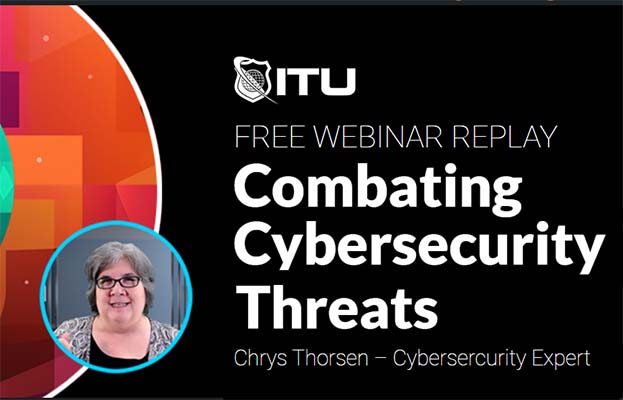In the dynamic realm of cybersecurity, the importance of understanding an adversary’s tactics cannot be overstated. Passive reconnaissance, a crucial component of the pre-attack phase, plays a pivotal role in the world of penetration testing. This unobtrusive information-gathering technique arms ethical hackers with essential insights, enabling them to identify vulnerabilities and strengthen defenses effectively. In this blog, we will delve into the nuances of passive reconnaissance, explore real-world examples, and discuss its significance in the context of penetration testing.
CompTIA PenTest+ PT0-001
Be a skilled penetration tester with CompTIA PenTest+ PT0-001! Get certified today and enhance your job prospects in the field of cybersecurity.
Understanding Passive Reconnaissance
Passive reconnaissance, also known as “passive information gathering,” involves collecting data from publicly available sources without directly interacting with the target system or network. This approach aims to minimize the risk of detection while gathering valuable intelligence that could be exploited later in the attack process. Unlike active reconnaissance, which involves direct probing of the target system, passive reconnaissance focuses on assembling a puzzle of information from various sources to create a comprehensive picture of the target.
Examples of Passive Reconnaissance
1. WHOIS Lookup
Domain WHOIS information provides details about the registered owner, registration date, and contact information for a domain. Ethical hackers can extract information about a target organization’s domains to understand its online presence, its affiliated entities, and potentially identify key personnel.
Performing a WHOIS lookup can provide valuable information about domain registrations, ownership details, and more. Here are some popular websites and links where you can perform WHOIS lookups:
- ICANN WHOIS: The Internet Corporation for Assigned Names and Numbers (ICANN) provides a centralized WHOIS lookup tool.
- Website: https://whois.icann.org/
- WHOIS.net: This website offers a user-friendly interface for performing WHOIS lookups.
- Website: https://whois.net/
- DomainTools: DomainTools provides comprehensive domain research tools, including WHOIS lookups.
- Website: https://www.domaintools.com/whois/
- WHOIS Lookup by MxToolbox: MxToolbox offers a range of network diagnostic tools, including a WHOIS lookup service.
- Website: https://mxtoolbox.com/Whois.aspx
- WHOIS Lookup by Network Solutions: Network Solutions is a domain registration provider that offers a WHOIS lookup service.
- WHOIS Lookup by GoDaddy: GoDaddy is a popular domain registrar that provides a WHOIS lookup service.
- Website: https://www.godaddy.com/whois
- WHOIS Lookup by Namecheap: Namecheap is another well-known domain registrar that offers a WHOIS lookup tool.
- WHOIS Lookup by WHOIS.com: WHOIS.com provides a simple and straightforward WHOIS lookup service.
- Website: https://www.whois.com/whois
- WHOIS Lookup by Domain.com: Domain.com is a domain registrar that provides a WHOIS lookup tool.
- Website: https://www.domain.com/whois/
- Linux Command Line WHOIS: If you prefer using the command line, you can perform a WHOIS lookup directly from a Linux terminal.
- Open the terminal and enter:
whois domain.com
- Open the terminal and enter:
Remember that WHOIS information can vary depending on the registrar and the domain’s privacy settings. Some domains might have private or masked WHOIS information to protect the registrant’s privacy. Always use WHOIS information responsibly and within legal and ethical boundaries.

Cybersecurity Training Series – 15 Courses
Embark on a Thriving Cybersecurity Career! With our Ultimate Cyber Security training courses, you’ll dive into the world of ethical hacking, penetration testing, and network security. Our 15 comprehensive courses, led by industry experts, will equip you with essential Cybersecurity skills, setting you on the path to success in this ever-evolving field.
2. Social Media Analysis
Publicly available social media profiles can reveal a treasure trove of information about an organization’s employees, their roles, and even their interactions. Attackers can piece together information to create targeted spear-phishing campaigns.
Different platforms cater to various types of users, so the choice of targeted platforms depends on the specific goals of the reconnaissance. Here are some commonly targeted social media platforms for passive reconnaissance:
- LinkedIn: LinkedIn is a professional networking platform. It’s a goldmine for information about individuals’ job titles, roles, connections, and work histories. Attackers can use this information to craft targeted phishing attacks or gain insights into an organization’s structure.
- Twitter: Twitter can provide real-time updates and opinions from individuals, including those in the technology and security fields. By analyzing tweets, attackers might identify potential vulnerabilities or trends related to a target organization.
- Facebook: Facebook often contains personal information about users, including details about their personal lives, interests, and connections. This information can be used for social engineering attacks or targeted phishing.
- Instagram: Instagram is a visual platform that can provide insights into users’ hobbies, interests, and social circles. Attackers might glean personal information that could be used to create convincing spear-phishing campaigns.
- Reddit: Reddit hosts a multitude of communities (subreddits) dedicated to various topics. By analyzing users’ posts and comments, attackers can gain insights into their interests, activities, and possibly identify potential weaknesses.
- GitHub: While primarily a platform for sharing and collaborating on code, GitHub can also reveal details about an organization’s software development practices, code repositories, and sometimes even sensitive data inadvertently exposed in code commits.
- YouTube: YouTube channels and videos can provide information about individuals’ interests, skills, and activities. Attackers might use this information to tailor social engineering attacks.
- Pinterest: Pinterest showcases users’ interests through the images and content they save. Although it may not be the first platform that comes to mind for reconnaissance, it can still provide valuable insights.
- TikTok: TikTok videos can provide a glimpse into users’ daily lives, interests, and creative endeavors. However, TikTok’s focus on short videos might limit the depth of information available.
Remember that the effectiveness of passive reconnaissance relies on the amount of information users share on these platforms. It’s essential to approach this information-gathering process ethically and within legal boundaries. For penetration testers, the goal is to understand the scope of information that attackers might leverage and provide recommendations to mitigate potential risks associated with overexposing personal or organizational details.
3. DNS Enumeration
By querying DNS servers, ethical hackers can discover subdomains and their associated IP addresses. This information is crucial for mapping the target’s network infrastructure and identifying potential entry points.
Domain Name System (DNS) enumeration is a technique used in information gathering during the reconnaissance phase of a cybersecurity assessment. DNS is like the internet’s phonebook, translating human-friendly domain names into IP addresses that computers understand. DNS enumeration involves querying DNS servers to gather information about domain names, subdomains, and associated IP addresses. This process provides a clearer picture of a target’s network infrastructure, helping attackers identify potential entry points or misconfigurations.
Methods of DNS Enumeration:
- Forward DNS Lookup: This involves translating domain names into IP addresses. It’s like searching for the IP address associated with a known domain.
- Reverse DNS Lookup: In reverse DNS lookup, the process is reversed. You start with an IP address and try to find associated domain names.
- Zone Transfer: DNS servers can transfer their zone information to authorized servers. Zone transfer vulnerabilities can reveal extensive information about the DNS structure of a domain.
Tools for DNS Enumeration:
- NSLookup (Command Line): NSLookup is a built-in command in most operating systems. It’s used to query DNS servers for information about various records associated with domain names and IP addresses.
- Example:
nslookup domain.com
- Example:
- Dig (Command Line): Dig (Domain Information Groper) is another command-line tool used for DNS queries. It provides more detailed information and supports various query types.
- Example:
dig domain.com
- Example:
- Fierce: Fierce is a Perl script designed to quickly scan domains using several DNS enumeration techniques.
- DNSRecon: DNSRecon is a powerful DNS enumeration tool that provides multiple scan types, including standard enumeration, zone transfer, and reverse lookup.
- theHarvester: While not exclusively a DNS enumeration tool, theHarvester can perform DNS enumeration as part of its information-gathering process.
- Nmap: Nmap is a versatile network scanning tool that includes DNS enumeration capabilities.
- Website: https://nmap.org/
- Sublist3r: Sublist3r is a Python tool designed to enumerate subdomains of a domain using various search engines.
- Amass: Amass is a versatile reconnaissance tool that includes DNS enumeration as well as other subdomain discovery techniques.
- GitHub: https://github.com/OWASP/Amass
When using DNS enumeration tools, remember that querying DNS servers for information might trigger alerts in target networks. It’s important to conduct DNS enumeration responsibly and only on systems and networks you have permission to assess.
Certified Ethical Hacker (CEH) Version 11
Embark on your ethical hacking journey with our 3-course program! Master advanced concepts, select the right tools, and gain hands-on experience with real-world scenarios.
4. Search Engine Reconnaissance
Search engines often index sensitive files and directories inadvertently exposed by websites. Ethical hackers can use specialized search queries to discover hidden assets such as backup files, configuration files, and sensitive data.
Search engine reconnaissance, often referred to as “Google dorking,” involves using advanced search queries on search engines to discover sensitive or hidden information exposed on the internet. This technique is commonly used in penetration testing to identify potential vulnerabilities, misconfigurations, and sensitive data leaks. Here are some examples of search engine reconnaissance for penetration testing:
- Finding Sensitive Files:
- Query:
filetype:pdf site:example.com confidential - Description: This query searches for PDF files containing the word “confidential” on the specified website. Such files might inadvertently expose sensitive information.
- Query:
- Directory Listings:
- Query:
site:example.com intitle:index of - Description: This query aims to find directory listings on the specified website. Unintentionally exposed directories might contain sensitive files.
- Query:
- Config Files and Credentials:
- Query:
filetype:ini OR filetype:xml OR filetype:conf site:example.com - Description: This query searches for configuration files on the specified website that might contain sensitive information, including passwords or credentials.
- Query:
- Exposed Backup Files:
- Query:
filetype:bkf OR filetype:bkp OR filetype:bak site:example.com - Description: This query targets backup files that might contain old versions of websites, databases, or sensitive data.
- Query:
- Error Messages:
- Query:
site:example.com intext:"error message" - Description: This query helps identify pages on the target website that display error messages. These messages might reveal details about the server’s configuration.
- Query:
- Username Enumeration:
- Query:
site:example.com inurl:login OR inurl:signin - Description: This query searches for login or signin pages on the target website, potentially revealing usernames or email addresses.
- Query:
- Vulnerable Applications:
- Query:
intitle:"Powered by X" site:example.com - Description: Replace “X” with the name of a specific application. This query helps find websites that use a certain application, making it easier to target known vulnerabilities.
- Query:
- Exposed Git Repositories:
- Query:
site:github.com inurl:.git - Description: This query targets Git repositories hosted on GitHub. Misconfigured repositories might expose sensitive source code or credentials.
- Query:
- Publicly Accessible Cloud Storage:
- Query:
site:s3.amazonaws.com OR site:storage.googleapis.com - Description: This query aims to find publicly accessible cloud storage buckets that might contain sensitive files.
- Query:
- Webcams and IoT Devices:
- Query:
inurl:/view.shtml site:example.com - Description: This query searches for webcams or Internet of Things (IoT) devices accessible over the internet. Misconfigured devices might allow unauthorized access.
- Query:
Remember, ethical hacking and penetration testing should always be conducted within legal and ethical boundaries, with proper authorization from the target. The goal is to identify vulnerabilities so they can be remediated, rather than exploiting them maliciously.
Sign Up For Our Free Webinar Replay, Combating Cybersecurity Threats
Join us and take advantage of a replay of our Webinar Series on Combating Cyber Threats. During this webinar, our expert discusses device baiting in this informational 90 minutes webinate
The Role of Passive Reconnaissance in Penetration Testing
Penetration testing, commonly known as ethical hacking, simulates real-world cyberattacks to evaluate the security posture of an organization. Passive reconnaissance serves as a foundational step in this process, aiding penetration testers in:
1. Creating a Blueprint
Passive reconnaissance provides a comprehensive blueprint of the target’s digital footprint. This intelligence is crucial for planning subsequent stages of the attack, enabling testers to focus their efforts on the most vulnerable areas.
2. Identifying Attack Vectors
By analyzing the data gathered through passive reconnaissance, penetration testers can identify potential attack vectors, vulnerabilities, and entry points that attackers might exploit. This information is essential for developing effective attack strategies.
3. Minimizing Detection
Passive reconnaissance minimizes the risk of detection since it doesn’t involve direct interaction with the target. This allows testers to assess the target’s security posture without alerting its defenses.
4. Customizing Attacks
The insights gained from passive reconnaissance enable penetration testers to customize their attacks based on the target’s unique characteristics. This approach increases the chances of a successful breach, which further emphasizes the importance of effective reconnaissance.
Conclusion
Passive reconnaissance stands as an essential cornerstone of penetration testing, empowering ethical hackers to understand their target’s digital footprint and potential vulnerabilities. The art of gathering information from publicly available sources lays the groundwork for successful simulated attacks, allowing organizations to fortify their defenses and secure their digital assets. As the cybersecurity landscape continues to evolve, mastering the nuances of passive reconnaissance remains an indispensable skill for those dedicated to protecting the digital realm.
Frequently Asked Questions About Passive Reconnaissance
How does passive reconnaissance differ from active reconnaissance?
Passive reconnaissance gathers information without directly engaging with the target, while active reconnaissance involves direct probing and interaction with the target’s systems or networks.
Why is passive reconnaissance an important phase in penetration testing?
Passive reconnaissance provides a foundation of information for penetration testers to identify potential attack vectors, vulnerabilities, and entry points before initiating any direct interaction with the target.
How can the insights gained from passive reconnaissance be useful for penetration testers?
The insights from passive reconnaissance aid penetration testers in customizing attack strategies, identifying vulnerabilities, minimizing the risk of detection, and creating a blueprint for further testing.
What ethical considerations should be kept in mind during passive reconnaissance?
Passive reconnaissance should always be conducted within legal and ethical boundaries. It should only target systems and networks for which you have authorization, and the gathered information should be used responsibly to improve security rather than exploit vulnerabilities.
What is passive reconnaissance in the context of cybersecurity?
Passive reconnaissance involves collecting information from publicly available sources without directly interacting with the target system or network. It aims to gather intelligence while minimizing the risk of detection.



























